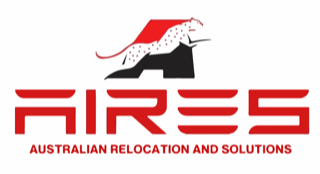

Aires Relocation
General Guidelines For Asbestos Removal From Workplaces
The 2004 Occupational Safety and Health Act and the 2007 Occupational Safety and Health Regulations outline procedures and measures to be followed when removing asbestos from residential and commercial properties. This term refers to all places where asbestos or asbestos-containing material (ACM), has been found, in large or small amounts.
These are examples of Asbestos Containing Materials and areas likely to contain asbestos:
Asbestos cement water pipes and sheets, boiler insulation, boiler insulation, floor tiles, floor vinyl tiles, lining of switchboards flexible hoses, fire door insulation and the linings of switchboards.
1. Removalists who are not licensed
Self-employed people can do removal work, but only in a very limited area.
2. Licensee Removalists
Class A
This license allows the holder to remove all types of asbestos on areas greater than 10 square meters.
Class B
The license holder can only remove up to 10 square metres of friable or non-friable asbestos or ACM.
3. Plan for Removal
This framework guides all activities. This includes the time frame, the job description and tools, as well as the budget. It also includes safety precautions that must be taken.
4. Atmospheric Monitoring
This is required to monitor any asbestos fibers released into the atmosphere after friable asbestos removal. The air should have no more than 0.01 percent asbestos fibers per milliliter after cleaning. For future reference, a detailed report on the process is prepared.
5. Additional Safety Precautions
Personal and general protection equipment should be properly maintained and in good working order. In the event of any malfunctions, a backup should be available. Within 24 hours, WorkSafe Australia must receive a report detailing the failure. Wrap the area with thick, new plastic sheeting.
6. Handling Of Waste
You should dispose of waste material in thick polythene bags. These bags must be sealed with tape and labeled correctly as asbestos waste. It is important to dispose of the waste immediately following its removal.
7. Material Inspection
You may find material on the site that needs to be reused. These materials must be professionally inspected in order to ensure that no asbestos dust has settled.
These guidelines are just a small part of what is possible. If you are a removalist or an independent contractor, get a copy from the Australian government's database and follow the law.
Safety measures must be followed as closely and meticulously as possible, as inhaling or swallowing asbestos fibers could cause mesothelioma and asbestosis, and even lung cancer. Many corporations have developed compliance codes that may not conform to the Occupational Health and Safety Act. An offence could be brought against them. To find out which codes have been approved by the Ministry, or to use the statute as a guide, it is important to consult the database.

